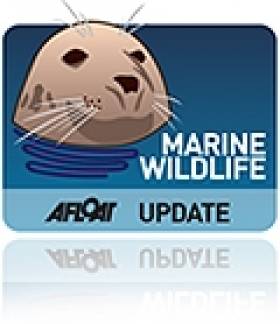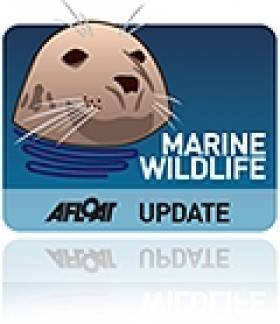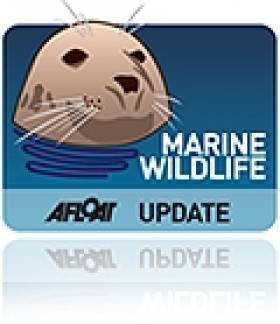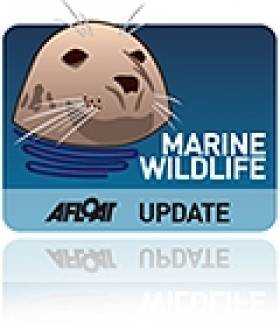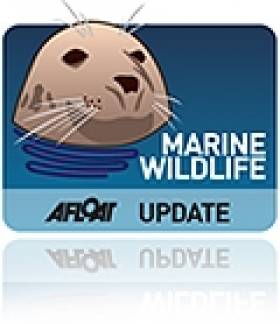Displaying items by tag: Dingle Wildlife and Seal Sanctuary
Dingle Seal Sanctuary Welcomes New Arrivals
#MarineWildlife - Wildlife enthusiast Karl Grabe has posted on YouTube video of newborn seal pups rescued by the Dingle Wildlife and Seal Sanctuary last week.
Named by staff at the sanctuary as Salt, Pepper, Sugar and Cocoa, the four are as cute as buttons - and anyone who visits over the summer can see them or others like them, such as two-week-old Molly who's also featured in the above clip.
#MarineWildlife - The Irish Seal Sanctuary has told Radio Kerry that it is no longer looking for the culprits behind the shocking sea beheadings in Dingle last summer.
As reported on Afloat.ie one year ago, staff at the Dingle Wildlife and Seal Sanctuary were sickened by the gruesome sight of two baby seal heads nailed to signs outside the facility.
Johnny Woodlock of the Dingle Seal Sanctuary later claimed that the horrific discovery was part of a "swing in activity in recent months" where dead seals were found on beaches around the country with "apparent gunshot wounds".
However, the founder of the Irish Seal Sanctuary has said that the group is no longer actively seeking the perpetrators of the barbaric Dingle incident.
"It's not a high priority for me any longer," said Brendan Price of the Irish Seal Sanctuary, who added that rewards for information are "posted from time to time when incidents like this have occurred".
Price continued: "I wouldn't be looking for some kind of public atonement. I don't think it's helpful to keep rewards up any longer, and I'm sure that it will not happen again."
Common Seal Pups Rescued in Dublin
#MARINE WILDLIFE - Seal pups Rebecca and Emma had a curious audience of tourists at Malahide Castle earlier this month as they prepared for their relocation to Dingle, where they will be cared for by Irish Seal Sanctuary (ISS) volunteers.
The pups were rescued from different parts of north Dublin. Both were found very ill at the time, but according to the ISS, volunteers rallied to their support, providing much needed fluids for rehydration before their long journey south.
Rebecca is named after the daughter of her rescuer, ISS volunteer and Howth businessman Jon Cooke. Meanwhile, Emma was rescued by one of the founder members of the ISS, Johnny Woodlock, from the beach in Skerries.
The ISS added that it is grateful for the sponsorship of the rehab season the Dingle Wildlife and Seal Sanctuary is providing for the seal pups' care.
Three Seals Set For Release This Weekend
The Irish Seal Sanctuary (ISS) is gearing up for three seal releases this coming weekend.
On Saturday 5 February ISS volunteers in tandem with the Dingle Wildlife and Seal Sanctuary will release Rupert and Rosie back into the wild at Beal Ban Beach in Ballyferriter, Co Kerry.
The two grey seal pups were rescued from the Dun Chaoin area last November within days of each other, the male pup with several injuries. Both now rehabilitated, it's expected they will rejoin the grey seal colony just off the Dingle Peninsula.
Then on Sunday 6 February the ISS will release another grey seal pup, Mary, from Kilpatrick Beach in Castletown, Co Wexford.
For more details on these releases visit www.irishsealsanctuary.ie
Seal Sanctuary Sees Off Latest Releases
The Irish Seal Sanctuary celebrated the release of six grey seal pups from two different locations last weekend.
Dustin, Phoenix and Sean were released from Courtown Harbour, while Buddy Holly, Louise and Cookie were put into the water in Ballyferriter, Co Kerry with help from the Dingle Wildlife and Seal Sanctuary.
Sarah Forde, a volunteer at the Dingle sanctuary, told the Irish Independent that Buddy Holly was just 11kg in weight when he was brought in last October.
"Now, three months later, he's a healthy 44kg, the proper weight for a pup his age and in the next two years as he reaches maturity he'll grow to around 300kg," she said.
Louise and Cookie (pictured HERE) were found in a similar condition in beaches in Co Kerry after being abandoned by their mothers.
The Irish Seal Sanctuary's next release will be this Saturday 15 January when Cecil and Snowy, two seal pups rescued in Belmullet and rehabilitated at the sanctuary in Courtown, will be returned to the wild at Falmor Beach, Black Sod, Co Mayo.



























